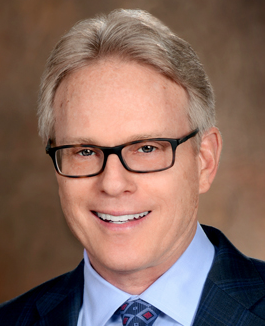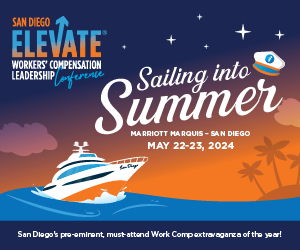Geaney: A New Presumption for Private-Sector EMTs, Paramedics
Monday, January 29, 2024 | 0
The recent passage of A5909 has generated many questions from hospitals and private-sector ambulance companies that provide EMT and paramedic services.

John H. Geaney
The questions focus on the recently passed legislative overhaul of NJSA 34:15.7.3. That original 1988 law is entitled “Cardiovascular or cerebrovascular injury or death of police, fire or emergency personnel in response to an emergency: presumption of compensability.”
On Jan. 16, Gov. Phil Murphy signed a sweeping overhaul of this 1988 legislation, providing coverage for a new category of employees, namely paramedics and EMTs, and extending the coverage to private-sector paramedics and EMTs. The new law covers paramedics and EMTs who suffer a heart attack or stroke while responding to a public safety or medical emergency or remediating from one within 24 hours after the emergency has ended.
As readers know, a presumption of compensability shifts the burden of proof to the employer to disprove a case. The original 1988 public-sector cardiovascular or cerebrovascular law employed a preponderance of evidence presumption, meaning essentially that if the employer could prove by more than 50% that the heart attack or stroke was not work-related, the employer would prevail.
The overhaul law changed the presumption to a much higher legal standard. Now the employer has to prove by clear and convincing evidence that the heart attack or stroke was not related to work. This is the first statute in New Jersey history to apply a clear and convincing evidence standard in workers’ compensation.
What does this new standard mean? Readers can think of clear and convincing evidence as requiring the employer to offer proof that demonstrates by a high probability that the facts or medical evidence offered by the employer are true or accurate. Merely showing that the employer’s position is more likely than not to be accurate (just over 50%) will be insufficient to meet the clear and convincing evidence standard. The defense must demonstrate a high probability that its position is accurate.
The questions that have been coming into our office have focused on what the new law means when it refers to private-sector EMTs and paramedics. Does this mean every single paramedic and EMT in New Jersey who has a heart attack or stroke in a close time relation to an emergency call is covered by this high presumption? Unfortunately, this new law does not provide any commentary.
Here is what it says: Coverage under this law shall apply to “any career emergency medical technician or paramedic employed by the state, a county, a municipality or a private-sector counterpart who is engaged in public emergency medical and rescue services.”
Some have asked what the word “counterpart” means. This is not a legal term, so one can study a dictionary definition. The word is defined as someone who performs a function that corresponds to that of another person. For example, the manager of a baseball team is the counterpart to the coach of a football team. They perform similar services for their respective teams.
Does this new law mean that every private-sector paramedic and EMT is automatically considered a counterpart of a public-sector paramedic or EMT?
Sometimes the Legislature adds comments after a new bill explaining its analysis of the main changes. There are no comments to explain why this law, formerly focused only on the public sector, is now applicable to private-sector paramedics and EMTs.
It seems clear that this law will apply to a situation when a hospital or a private company enters into a contract with a municipality, county or the state to provide paramedic or EMT services for residents or facilities within the municipality, county or state. What we cannot tell is if a contract with a public-sector employer is a threshold requirement.
Example: A private-sector ambulance company enters into a contract directly with a nursing home to perform emergency services. Does that make the private-sector EMT a counterpart under the above definition? Does it matter that perhaps in the past the municipality used to perform these services with its paid or volunteer EMTs for the nursing home?
No one knows the answer, but we do know this: Arguments for a broad interpretation of this new law will be advanced by paramedics and EMTs who suffer heart attacks or strokes. Those cases will be tried in the courts, which will eventually provide us with an answer.
It is also important to understand two other major aspects of the legislative overhaul of NJSA 34:15-7.3. First, the former requirement that the public safety official must prove that he or she was “acting under orders from a competent authority in effecting a response” has been deleted. The private-sector paramedic or EMT does not have to demonstrate proof that he or she was ordered to respond to the emergency by some superior from work.
The other point to understand is that covered employees, including paramedics and EMTS, are presumed to be covered while “remediating from a law enforcement public safety or medical emergency.” This language is also new. The word “remediating” is defined as “leaving an emergency in a reasonable period of time, not to exceed 24 hours from the end of the emergency, to carry out post-injury agency protection and decompression including measures such as ‘critical incident stress debriefing.’”
In other words, if the heart attack occurs within 24 hours after the emergency has ended, most likely the presumption of compensability will still apply.
Again, this presumption is the highest presumption ever applied to any New Jersey workers’ compensation statute.
John H. Geaney is an attorney, shareholder and co-chair of Capehart Scatchard's Workers' Compensation Group in New Jersey. This post appears with permission from Geaney's New Jersey Workers' Comp Blog.



Comments